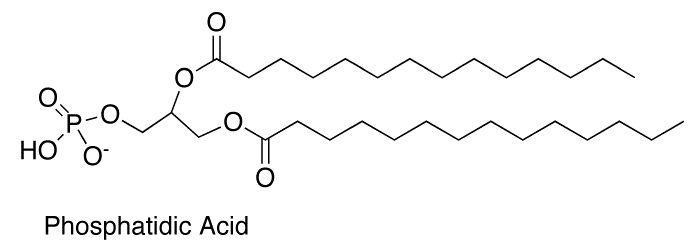Introduction
Overview of the Gene Expression Market
The gene expression market involves technologies and methodologies that measure and analyze the transcription and translation of genetic information. Gene expression analysis is crucial in understanding cellular functions, identifying disease mechanisms, and developing targeted therapies. It is widely used in research, diagnostics, and drug development, making it an essential component of modern biotechnology and medical research.
Importance and Applications of Gene Expression Studies
Gene expression studies play a pivotal role in various scientific fields. They help in identifying the functions of genes, understanding genetic variations and their impact on health, and developing new therapeutic approaches. Applications include studying cancer biology, infectious diseases, genetic disorders, and more. In diagnostics, gene expression profiles can help in early disease detection and personalized treatment plans.
Market Valuation and Growth Projections
Current Market Size and Valuation (USD 13.3 billion in 2023)
As of 2023, the global gene expression market is valued at USD 13.3 billion. This significant valuation reflects the extensive adoption of gene expression technologies across various industries, particularly in medical research and biotechnology.
Expected Market Growth Rate (CAGR of 10.42%)
The market is expected to grow at a compound annual growth rate (CAGR) of 10.42% during the forecast period of 2024-2032. This robust growth rate is indicative of the increasing demand for gene expression analysis tools and services driven by advancements in genomics and personalized medicine.
Projected Market Size by 2032 (USD 32.4 billion)
By 2032, the market is projected to reach a valuation of USD 32.4 billion. This growth is fueled by continuous technological innovations, rising healthcare expenditures, and the expanding application scope of gene expression analysis.
Geographic Market Share with a Focus on Europe
Europe holds a significant share of the gene expression market, attributed to strong research infrastructure, favorable government policies, and high investment in biotechnology. The region’s market leadership is further supported by collaborations between academic institutions and industry players, driving innovation and adoption of advanced gene expression technologies.
Market Drivers
Increasing Research Activities in Genomics and Biotechnology
The surge in genomic and biotechnological research is a primary driver of the gene expression market. Governments and private entities are investing heavily in genomics research, leading to the development of novel therapies and diagnostic tools. The increasing availability of research funding and grants has also accelerated advancements in this field.
Rising Demand for Personalized Medicine
Personalized medicine tailors medical treatment to the individual characteristics of each patient. Gene expression analysis is integral to personalized medicine, as it helps identify specific genetic markers and profiles that influence an individual’s response to treatments. The growing emphasis on personalized healthcare is significantly boosting the demand for gene expression technologies.
Technological Advancements in Gene Expression Analysis Tools
Continuous innovations in gene expression analysis tools, such as next-generation sequencing (NGS), microarrays, and quantitative PCR, are enhancing the accuracy, efficiency, and speed of gene expression studies. These advancements are making gene expression analysis more accessible and cost-effective, thereby driving market growth.
Growing Investment in Healthcare and Life Sciences
The healthcare and life sciences sectors are witnessing substantial investments aimed at improving disease diagnosis, treatment, and prevention. Such investments are facilitating the development and commercialization of advanced gene expression technologies, contributing to market expansion.
Regulatory Approvals and Impact
Overview of Significant Regulatory Approvals
Regulatory approvals play a critical role in the commercialization of gene expression technologies. Products and services in this market must comply with stringent regulatory standards to ensure safety and efficacy. Notable regulatory approvals from bodies such as the U.S. Food and Drug Administration (FDA) and the European Medicines Agency (EMA) have been pivotal in driving market growth.
Impact of Regulatory Policies on Market Growth
Regulatory policies can significantly influence market dynamics. Favorable regulations that streamline approval processes and encourage innovation can accelerate market growth. Conversely, stringent regulations and lengthy approval processes can pose challenges to market entry and expansion.
Role of Governmental and International Regulatory Bodies
Governmental and international regulatory bodies oversee the approval and monitoring of gene expression technologies. Their role includes setting standards, conducting evaluations, and ensuring compliance with safety and efficacy requirements. Collaborative efforts between regulatory bodies and industry stakeholders are essential for fostering a conducive environment for market growth.
Get a Free Sample Report with Table of Contents – https://www.expertmarketresearch.com/reports/europe-gene-expression-market/requestsample
Market Segmentation
By Product Type
Consumables
Consumables, such as reagents, kits, and probes, are essential components of gene expression analysis. They are used in various stages of the analysis process, including sample preparation, amplification, and detection. The recurring need for consumables drives their demand, making them a significant segment in the market.
Instruments
Instruments used in gene expression analysis include sequencers, microarrays, PCR machines, and bioinformatics tools. These instruments are critical for conducting accurate and efficient gene expression studies. Continuous advancements in instrument technology are enhancing their capabilities and driving market growth.
By Application
Drug Discovery
Gene expression analysis is extensively used in drug discovery to identify potential therapeutic targets and understand the mechanisms of action of new drugs. It helps in screening and validating drug candidates, thereby accelerating the drug development process.
Diagnostics
In diagnostics, gene expression profiles are used to detect diseases at an early stage, predict disease progression, and monitor treatment responses. This application is particularly valuable in oncology, infectious diseases, and genetic disorders.
Research
Academic and research institutions utilize gene expression analysis to explore fundamental biological processes and investigate genetic variations. Research activities contribute to the development of new scientific knowledge and innovative technologies.
Others
Other applications of gene expression analysis include agriculture (for crop improvement), environmental monitoring (for detecting pollutants), and forensics (for identifying individuals and understanding genetic predispositions).
By End-User
Academic and Research Institutions
Academic and research institutions are major end-users of gene expression technologies. They conduct fundamental and applied research to advance scientific knowledge and develop new technologies and therapies.
Pharmaceutical and Biotechnology Companies
Pharmaceutical and biotechnology companies leverage gene expression analysis for drug development, clinical trials, and personalized medicine. These companies invest heavily in gene expression technologies to enhance their research and development capabilities.
Diagnostic Laboratories
Diagnostic laboratories use gene expression analysis for clinical diagnostics and disease monitoring. The growing demand for accurate and rapid diagnostic tests is driving the adoption of gene expression technologies in this segment.
Contract Research Organizations (CROs)
CROs provide outsourced research services to pharmaceutical and biotechnology companies. They use gene expression analysis to support drug development and clinical research, contributing to market growth.
Key Industry Players
F. Hoffmann-La Roche Ltd
F. Hoffmann-La Roche Ltd is a leading player in the gene expression market, known for its innovative diagnostic solutions and robust research capabilities. The company’s extensive product portfolio and global presence make it a key contributor to market growth.
QIAGEN
QIAGEN is renowned for its sample and assay technologies, which are widely used in gene expression analysis. The company’s focus on developing cutting-edge products and expanding its global footprint positions it as a significant market player.
Oxford Gene Technology (OGT) Group
OGT Group specializes in molecular genetics, providing high-quality products and services for gene expression analysis. The company’s expertise in microarray technology and bioinformatics enhances its market standing.
Eurofins Scientific
Eurofins Scientific is a global leader in laboratory services, offering comprehensive solutions for gene expression analysis. The company’s extensive laboratory network and commitment to innovation drive its market presence.
LGC Limited
LGC Limited is a prominent player in the life sciences sector, providing advanced analytical and diagnostic services. The company’s focus on quality and accuracy in gene expression analysis strengthens its market position.
Promega Corporation
Promega Corporation offers a wide range of products for life sciences research, including gene expression analysis tools. The company’s emphasis on innovation and customer support makes it a key player in the market.
Market Challenges and Opportunities
Challenges
- High costs associated with advanced gene expression technologies
- Technical complexities and the need for specialized expertise
- Stringent regulatory requirements and approval processes
- Ethical concerns related to genetic data privacy and security
Opportunities
- Emerging markets with increasing investment in biotechnology
- Development of cost-effective and user-friendly gene expression tools
- Growing adoption of gene expression analysis in agriculture and environmental monitoring
- Collaboration between academic institutions, industry players, and regulatory bodies to drive innovation
Future Trends
Integration of Artificial Intelligence and Machine Learning
AI and ML are revolutionizing gene expression analysis by enhancing data interpretation, identifying patterns, and predicting outcomes. These technologies are expected to significantly improve the accuracy and efficiency of gene expression studies.
Expansion of Single-Cell Analysis
Single-cell analysis allows for the study of gene expression at the individual cell level, providing deeper insights into cellular heterogeneity and function. The growing focus on single-cell analysis is likely to drive advancements in gene expression technologies.
Increasing Focus on Precision Medicine
The emphasis on precision medicine is expected to boost the demand for gene expression analysis, as it enables the identification of specific genetic markers and personalized treatment approaches.
Growth of Next-Generation Sequencing (NGS)
NGS technology is transforming gene expression analysis by providing high-throughput and cost-effective sequencing solutions. The continuous advancements in NGS are expected to drive market growth.




